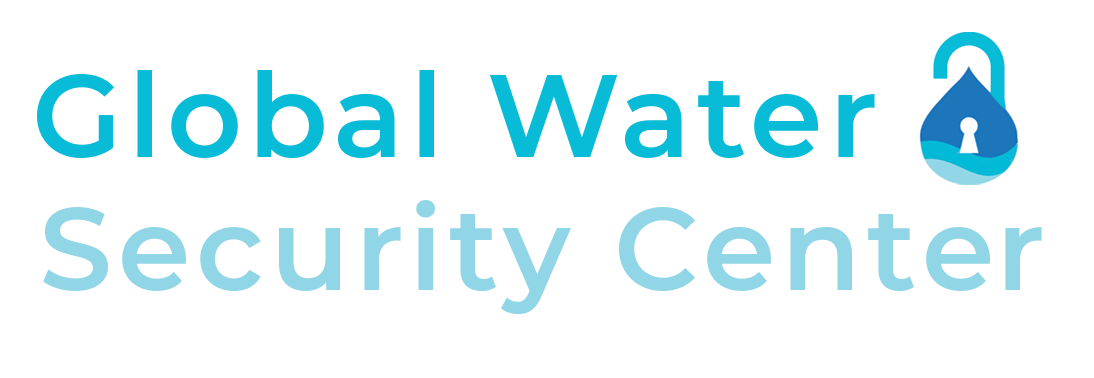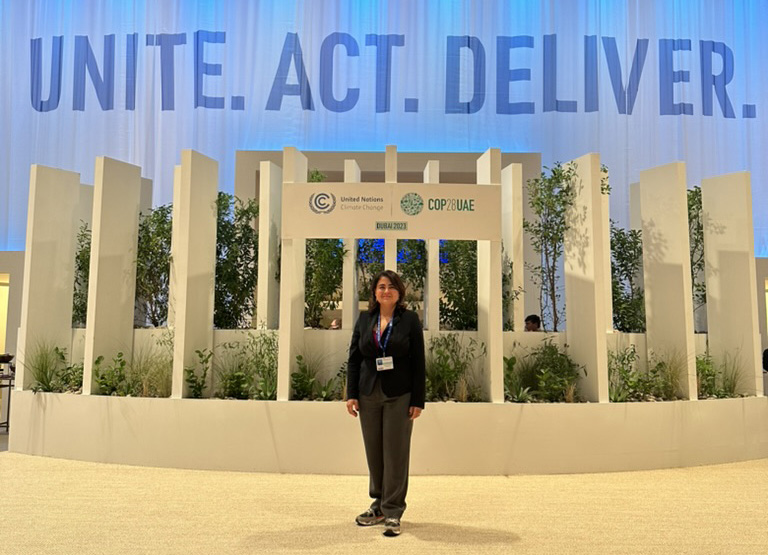This opinion article was written by GWSC Environmental Data Scientist Dr. Erin Menzies Pluer.
If you’re like me and care about policy, development, climate change, and water security, you probably already know about the COP conferences. But have you been giving it your full attention? I certainly haven’t; I know it’s out there and happening, but do I have a real understanding of the work being done? Particularly around water? Nope! I decided that this is the year I am going to get caught up on all things COP and water.
Who better to help get me caught up than Dr. Mónica Altamirano de Jong? She is currently Director of Climate Impact at WaterEquity. She has attended COP for the last few years and has worn many hats while there; this year her focus was on climate and water finance.
Mónica is an innovative systems thinker with deep knowledge of water security, water infrastructure financing and expertise in Public-Private Partnerships. Throughout her work and career, she finds herself at the “interface [between] core knowledge of the institution and the implementation.”
For example, Mónica has “developed a financing framework for water security, meant to create an interface between my colleagues who were doing the modeling of water risks and designing technological solutions and I would be looking at the financial sustainability of our proposals, asking after we leave the project will it continue? This required me to get to a more granular analysis of issues like risk allocation and requiring the consideration of behavioral insights. Clients can’t derive value from an improved early warning system [for example] unless they really take preventive action. You have to think about why they didn’t take action?”
She is always thinking deeply about how to get people from different sectors and communities of practice together to close the implementation gap in water and adaptation. “In the last 3 years at the NL Water institute, I created a small group, called ‘Closing the Implementation Gap,’ made up of 9 women” working together to create better outcomes and enhance the rate of implementation of solutions, she shared.
When I asked Mónica her favorite part of going to the conference, her face lit up. “I really like people, so it was great to see so many people there and meet new people,” she said. “What I like about COP is that it’s like, WHOA, the complexity and the scope of interaction. It brings a lot of private sector angles, especially this year.”
She also noted how activism and advocacy play a role. “Getting to see people who are also challenging the status quo, there are more of those at COP than at other places because it’s such a global multi sectoral problem,” she said. “There are a growing number of women leaders and indigenous communities that are organized to drive systems change or deeper change.”
Mónica is a big advocate for water on a global scale, so I wanted to know more about how water has played a role at COP this year and in years past. Things are getting exciting for the water sector at the conference; the water pavilion has more going on every year and is gaining momentum and attention. Discussions on biodiversity, nature regeneration, and regenerative agriculture as they relate to water are also taking shape.
Mónica shared that she was part of the launch of a new working group, the Sharm-El-Sheikh Adaptation Agenda, wherein two subgroups on Resilient Utilities and Climate Resilient WASH, launched last year at COP27. These were exciting new developments in water, but the most exciting development was that “this is the first time the final declaration included a statement on water scarcity and the need to enhance climate resilience including the role of freshwater ecosystems,” she said.
If you’d like to dig deeper into the declarations that touched on water issues, have a look at the Declaration on Climate and Health (143), Declaration on Agriculture, Food, and Climate (158), and Gender Responsive Just Transition (76), as well as the final declaration.
As I’m sure you’ve gathered, Mónica is a creative systems thinker who is always looking for better solutions, ways to empower those she serves, and generating drivers for a new economic development logic for the future. The best example of how she does that on a large scale is through the Rethinking Coalition for Collective Action and Investment Action and Investment Planning for a Water Secure World which was launched at the UN Water Conference. She describes it as a “space to challenge the status quo, where we can build on real collective intelligence. It’s a place where our dream is to bring this thinking beyond institutional roles and create brave spaces” for radical collaboration to challenge the status quo and reimagine collective action.
The future is bright for water at COP! Leaders like Mónica are challenging the status quo and driving creative and exciting change in the world of water.

